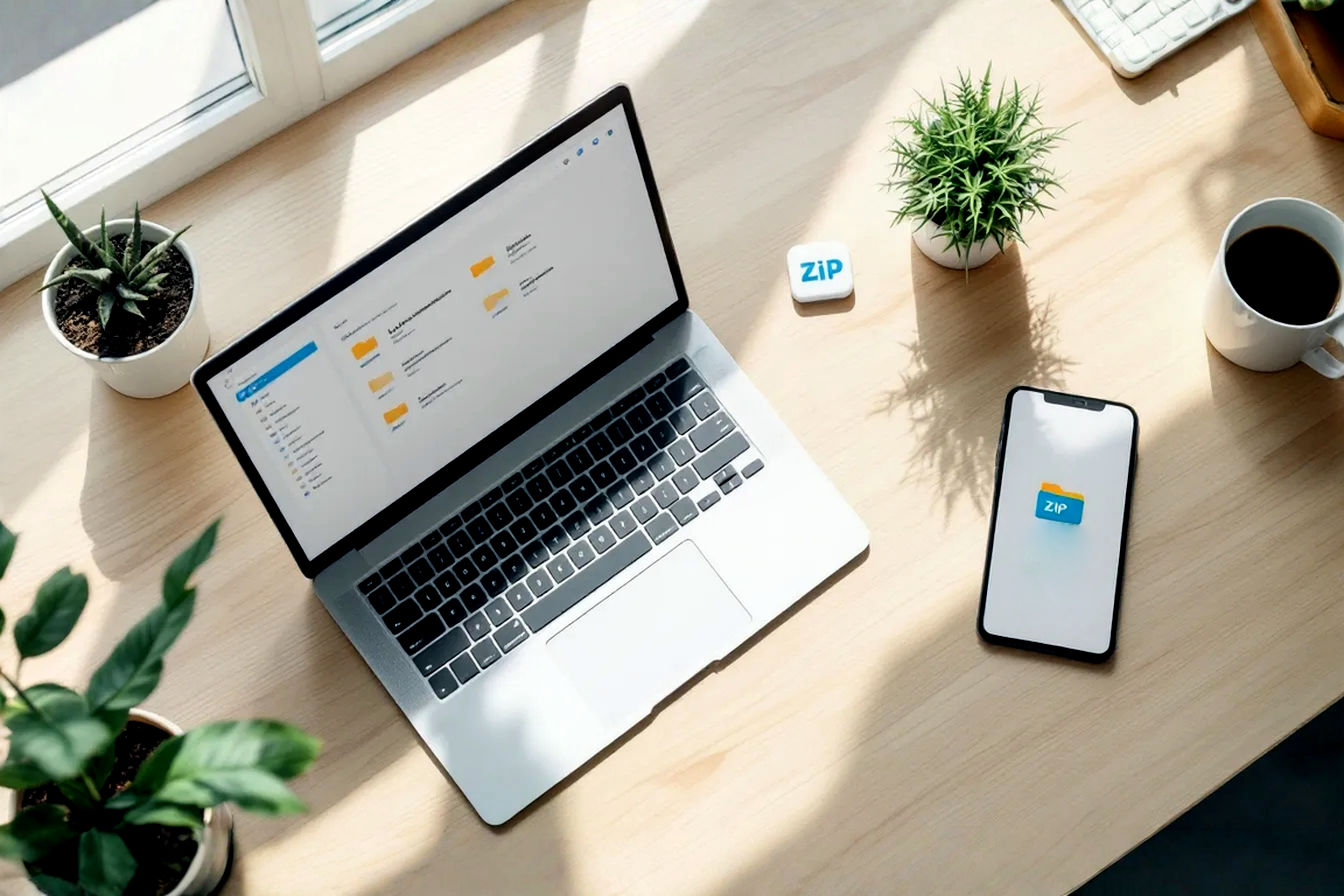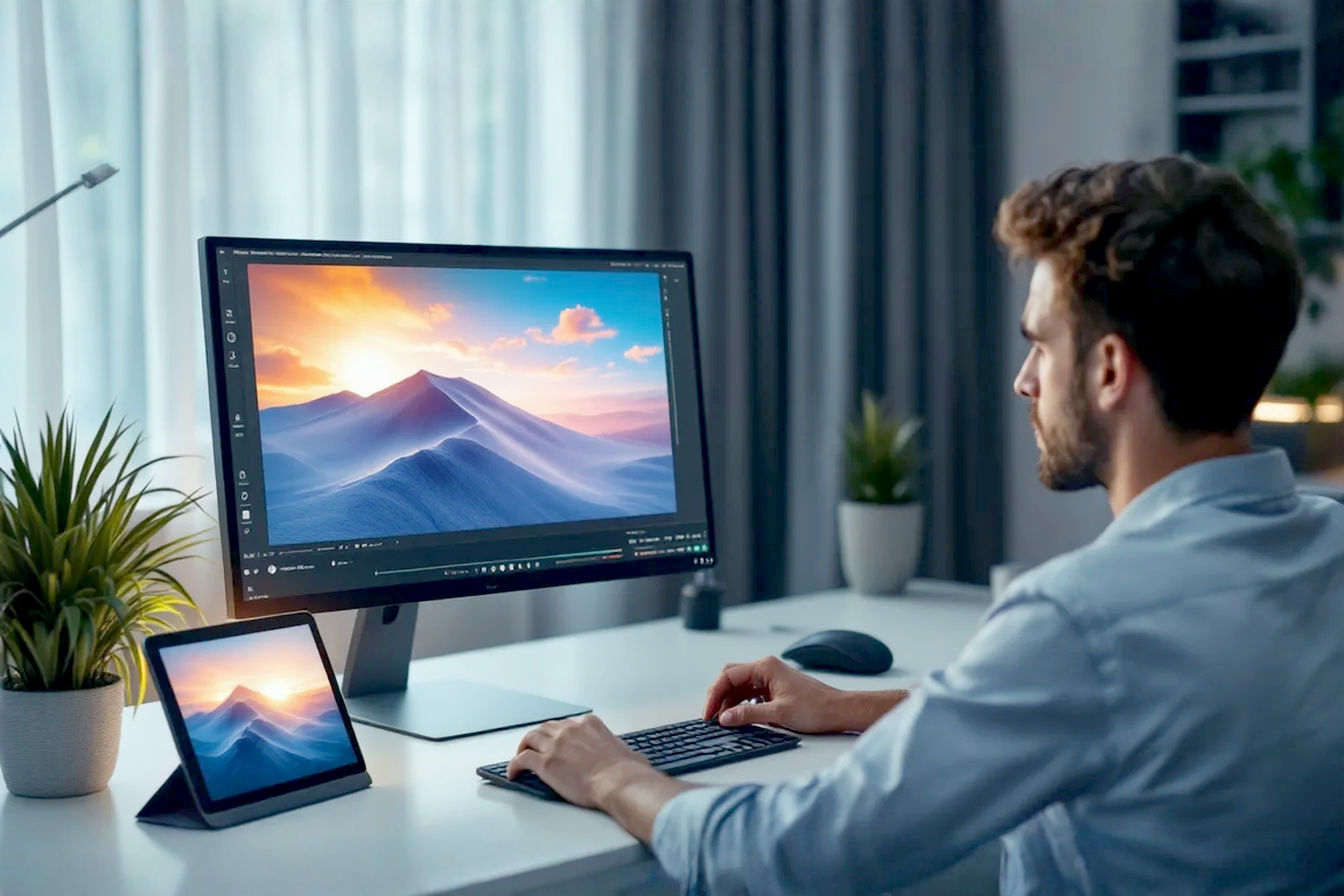This post may contain affiliate links. If you make a purchase through these links, we may earn a commission at no additional cost to you.
In today’s digital world, our computers and devices are gateways to vast amounts of information, entertainment, and personal data. But with this connectivity comes risk. Malicious software, or malware, is a constant threat, evolving and finding new ways to infiltrate our systems. Many users wonder if they need to spend money on antivirus software or if a free option can provide adequate protection. It’s a valid question: can free antivirus software really protect you in 2025? This guide will explore that question, delve into how these programs work, examine the capabilities of built-in solutions like Windows Defender, and review the top 5 free antivirus contenders to help you make an informed decision.
The Big Question: Is Free Antivirus Good Enough?
The allure of “free” is strong, especially when it comes to software. But when your personal data, financial information, and digital identity are at stake, “good enough” needs careful consideration. Let’s break down what free antivirus typically offers and where its limitations lie.
Understanding the Threat Landscape in 2025
The world of cyber threats is dynamic. Attackers are constantly devising new strategies. In 2025, we’re not just dealing with traditional viruses; the landscape includes:
- Malware: An umbrella term for any software designed to harm or exploit any programmable device, service, or network. This includes viruses, worms, Trojans, and more.
- Ransomware: A particularly nasty type of malware that encrypts your files, making them inaccessible until you pay a ransom. These attacks can be devastating for individuals and businesses alike.
- Phishing: Deceptive attempts to acquire sensitive information like usernames, passwords, and credit card details by masquerading as a trustworthy entity in an electronic communication, often email or instant messaging.
- Spyware: Software that secretly monitors your computer activity, collecting information about you without your knowledge or consent. This can range from tracking browsing habits for advertising to stealing login credentials.
- Evolving Threats: We’re also seeing the rise of AI-powered attacks, which can adapt and learn, making them harder to detect. Furthermore, the proliferation of Internet of Things (IoT) devices (smart home gadgets, wearables, etc.) has expanded the attack surface, creating new vulnerabilities if not properly secured.
Understanding these threats is the first step in appreciating the need for robust protection.
What Basic Protection Do Free Antiviruses Offer?
Free antivirus programs are designed to provide a foundational level of security. Their core functionality typically includes:
- Real-time Scanning: This is a crucial feature where the antivirus actively monitors files as they are accessed, downloaded, or executed, checking them for known threats.
- Virus Signature Databases: These are extensive libraries of known malware “fingerprints.” The antivirus compares files on your system to these signatures to identify infections.
- Malware Removal: If a threat is detected, the software will attempt to quarantine (isolate) or delete the malicious file.
Simplified Explanation: Think of how antivirus software detects known threats like a security guard checking IDs at a door. The guard has a list of known troublemakers (the virus signature database). If someone’s ID matches a name on the list, they’re not allowed in (the file is flagged as malicious).
Technical Explanation: This process primarily relies on signature-based detection. When a new piece of malware is discovered and analyzed, security researchers extract a unique string of bytes or a cryptographic hash from it – its signature. These signatures are added to the database, which your antivirus software downloads regularly. When you scan a file, the antivirus calculates its signature and compares it to the database. A match indicates an infection. Some free versions also employ basic forms of heuristic analysis. This method doesn’t rely on exact signature matches but instead looks for suspicious characteristics or behaviors in code that are common to malware, like attempts to replicate or modify critical system files.
The Inherent Limitations of “Free”
While free antivirus software offers essential protection, it comes with inherent limitations, largely because companies need a way to fund their operations and encourage upgrades to paid versions:
- Fewer Advanced Features: Paid versions almost always include a broader suite of security tools. Features often missing or severely restricted in free versions include advanced firewalls (beyond the basic one built into your OS), Virtual Private Networks (VPNs) for encrypted internet browsing, robust parental controls, identity theft protection, and secure online banking features.
- Potential for Ads and Upsells: To generate revenue or encourage upgrades, free antivirus programs frequently display pop-up ads, notifications, or persistent prompts to purchase the premium version. This can be intrusive and annoying for some users.
- Data Privacy Concerns: This is a significant point. Some less scrupulous free AV providers might monetize user data by tracking browsing habits or other online activities and selling this anonymized (or sometimes not-so-anonymized) data to third parties for marketing or other purposes. It’s crucial to read the privacy policy of any free software you install.
- Slower Updates for New Threats: The fight against malware is a constant arms race. New threats, known as zero-day exploits (vulnerabilities exploited before a patch is available), emerge daily. Paid antivirus solutions typically receive threat intelligence updates more rapidly and frequently than their free counterparts, giving them an edge in combating brand-new malware.
- Limited or No Customer Support: If you run into a problem with free antivirus software or have a persistent infection, you’re usually on your own. Customer support (via phone, chat, or email) is almost exclusively a feature of paid products. Free users might have access to online forums or FAQs, but direct assistance is rare.
Free vs. Paid Antivirus: A Quick Comparison
| Feature | Free Antivirus | Paid Antivirus |
|---|---|---|
| Core Malware Protection | Basic (signature-based, limited heuristics) | Advanced (signatures, advanced heuristics, AI, behavior) |
| Real-time Scanning | Usually Yes | Yes, often more comprehensive |
| Ransomware Protection | Basic or None | Advanced, dedicated modules |
| Phishing Protection | Limited (browser extensions) | More robust, dedicated anti-phishing engines |
| Firewall | Relies on OS firewall or none | Advanced, customizable firewall |
| VPN | None, or very limited (data caps, slow speeds) | Often included, with more servers and no/high data caps |
| Parental Controls | Usually None | Comprehensive |
| Identity Theft Protection | None | Often includes monitoring services |
| Password Manager | Rarely | Sometimes included |
| Customer Support | Limited (forums, FAQs) | Priority support (phone, chat, email) |
| Updates | Less frequent, may lag for zero-day threats | Frequent, rapid response to new threats |
| Ads/Upsells | Common | Usually None |
| System Performance | Varies, some can be resource-heavy | Often optimized for minimal impact |
When might free antivirus be “enough”? For users who practice very safe computing habits (e.g., avoiding suspicious websites and downloads, not opening unknown email attachments), primarily use their computer for light browsing or offline tasks, and are comfortable relying on basic protection, a good free antivirus, especially when paired with the built-in security features of their operating system, might suffice.
When is paid antivirus a worthwhile investment? If you handle sensitive data (financial, personal, business), frequently shop or bank online, have children who use the computer, download files from various sources, or simply want the peace of mind that comes with comprehensive protection and support, a paid antivirus solution is generally a wise investment. The cost is often minimal compared to the potential damage from a successful cyberattack.
How Free Antivirus Software Works: A Deeper Dive
Understanding the technology behind antivirus software can help you appreciate its strengths and weaknesses, particularly in free versions.
The Mechanics of Malware Detection
Antivirus programs use several techniques to identify and neutralize threats. Free versions typically rely heavily on the first two, with limited capabilities in the third.
- Signature-Based Detection:
- Simplified: As mentioned earlier, this is like a bouncer checking IDs against a list of known troublemakers. Each piece of malware has unique characteristics, like a digital fingerprint.
- Technical: Antivirus labs analyze malware and create a “signature” – a unique string of data or a hash value specific to that malware. These signatures are stored in a database on your computer, which is regularly updated by the antivirus vendor. When the software scans a file, it calculates the file’s signature and compares it to the millions of signatures in its database. A match indicates a known threat. The effectiveness of signature-based detection depends entirely on having an up-to-date database. This is why regular updates are critical.
- Heuristic Analysis (Basic):
- Simplified: This is like the bouncer looking for suspicious behavior. Even if someone’s ID isn’t on the list, if they’re acting strangely (e.g., trying to sneak in a weapon), the bouncer might stop them. Heuristics look for code patterns or program behaviors that are common in malware.
- Technical: Heuristic analysis examines the code structure, instructions, and overall behavior of a program to determine if it might be malicious, even if it’s not in the signature database. For example, if a program tries to write to critical system files, rapidly encrypt files, or hide its processes, heuristic analysis might flag it as suspicious. Basic heuristic analysis, often found in free AV, can be effective against variants of known malware but is also more prone to “false positives” – incorrectly identifying a legitimate program as a threat.
- Behavioral Monitoring (Limited in Free Versions):
- Simplified: This is like having security cameras watching how programs act after they’ve started running on your computer, looking for any dangerous actions.
- Technical: More advanced than static heuristic analysis, behavioral monitoring observes programs as they execute, often in a controlled environment called a “sandbox” or by closely monitoring their interactions with the operating system (system calls). If a program attempts malicious actions like connecting to known malicious servers, exploiting vulnerabilities, or modifying protected registry keys, it can be stopped. This is a powerful technique against new and unknown (zero-day) threats. This feature is more common and robust in paid antivirus solutions because it requires significant processing power and sophisticated algorithms. Free versions might offer very rudimentary forms, if any.
The Role of Cloud-Based Scanning
Many modern antivirus solutions, including some free ones, incorporate cloud-based scanning to enhance detection and reduce the load on your computer.
- Simplified: Instead of your computer doing all the detective work, it can quickly ask a super-smart security system on the internet if a file looks dangerous. This online system has the very latest information on new threats.
- Technical: With cloud-based scanning, when your antivirus encounters a suspicious or unknown file, it can send metadata or a fingerprint of that file to the vendor’s cloud servers. These servers, equipped with massive databases and powerful analytical tools (including machine learning), can perform a more in-depth analysis much faster than your local machine could. If the file is identified as malicious, the verdict is sent back to your AV, and the threat is blocked. This allows for faster response to emerging threats because the cloud database can be updated almost instantaneously, and it reduces the size of the signature database that needs to be stored locally, potentially improving system performance. Free versions may leverage the cloud for reputation checks or basic analysis, while paid versions often have more extensive cloud integration.
Why Updates Are Crucial
The digital threat landscape is a battlefield with an ongoing war between cybercriminals and security vendors. Malware authors constantly create new threats and modify existing ones to evade detection.
- Antivirus software relies heavily on regular updates to its virus signature databases and detection engines. Without these updates, your protection quickly becomes outdated and ineffective against the latest malware.
- The frequency and speed of these updates can differ between free and paid products. Paid services generally prioritize their paying customers, ensuring they receive the newest definitions and engine improvements as quickly as possible. While free versions do get updates, they might be on a slightly delayed schedule or less frequent, potentially leaving a window of vulnerability for brand-new threats.
Meet the Built-in Defender: Is Windows Defender Sufficient?
For Windows users, there’s a free, built-in antivirus solution: Microsoft Defender Antivirus (commonly known as Windows Defender). For years, it had a reputation for being basic, but it has significantly improved.
What is Windows Defender (Microsoft Defender Antivirus)?
Microsoft Defender Antivirus is Microsoft’s native anti-malware component that is deeply integrated into the Windows operating system (Windows 10 and Windows 11). It provides real-time protection against viruses, malware, spyware, and other threats. Its history dates back to an anti-spyware tool, but it has evolved into a full-fledged antivirus solution.
Defender’s Strengths
Windows Defender offers several compelling advantages:
- Free and Pre-installed: It comes with Windows at no extra cost and is enabled by default, meaning Windows users have baseline protection right out of the box.
- Good Baseline Protection: It provides solid protection against common and widespread malware. Independent testing labs like AV-Test and AV-Comparatives have shown significant improvements in Defender’s detection rates over the years, often scoring highly.
- Regular Updates: Defender receives threat definition updates frequently through the standard Windows Update mechanism, ensuring it stays current against many known threats.
- Improved Detection Rates: Recent evaluations by independent labs often place Microsoft Defender among the top products in terms of protection, performance, and usability, sometimes rivaling paid solutions in core malware detection. For instance, AV-Test’s 2024 and early 2025 reports have frequently given Defender high marks.
- Anti-Tampering Features: Windows includes features to protect Defender’s processes and settings from being disabled or altered by malware, which is a common tactic used by attackers.
- Integration with Windows Security: Defender works as part of the broader Windows Security suite, which includes features like the Windows Firewall, SmartScreen (for browser and app protection), parental controls, and device health monitoring.
Defender’s Weaknesses and Gaps
Despite its strengths, Windows Defender may not be the ultimate solution for everyone:
- Historically Lower Detection for Some Advanced Threats: While much improved, in some tests, Defender might still lag slightly behind the absolute top-tier paid solutions in detecting some sophisticated or zero-day threats. The very latest, highly targeted attacks might occasionally bypass it.
- Fewer Proactive Security Features: Compared to comprehensive paid security suites, Defender offers fewer advanced, proactive features. For example, while it integrates with Microsoft Edge’s phishing protection (SmartScreen), dedicated anti-phishing modules in some paid AVs offer broader protection across different browsers and email clients. It also lacks features like built-in VPNs, comprehensive identity theft monitoring, or advanced password managers found in many commercial suites.
- Granular Control and Configuration: Power users or IT administrators might find Defender’s configuration options less granular or accessible compared to some third-party antivirus products that offer more detailed control over scan settings, exclusions, and policy management.
- Reliance on Other Windows Features: Its overall effectiveness is often tied to other components of Windows Security being enabled and correctly configured, such as the Windows Firewall and SmartScreen.
When is Windows Defender “Good Enough”?
Windows Defender can be “good enough” for many users, particularly:
- Individuals who practice safe computing habits: being cautious about email attachments, avoiding suspicious websites, downloading software only from reputable sources, and using strong, unique passwords.
- Users whose online activities are generally low-risk.
- When it’s combined with other security best practices: ensuring the Windows Firewall is active, keeping the operating system and all applications (especially web browsers) updated, and performing regular backups of important data.
For the average home user who is mindful of online safety, Windows Defender provides a robust and convenient layer of protection.
Augmenting Windows Defender
Even if you rely on Windows Defender, you can enhance your security:
- Use Browser Security Extensions: Install reputable extensions that block ads, trackers, and known malicious websites.
- Perform Periodic Scans with On-Demand Malware Removers: Tools like Malwarebytes Free (discussed later) can be used occasionally to scan for threats that Defender might have missed, acting as a second opinion.
- Enable Controlled Folder Access: This Windows Security feature can help protect your important files from ransomware by preventing unauthorized applications from modifying them.
Top 5 Free Antivirus Contenders for 2025
Beyond Windows Defender, several third-party companies offer free antivirus solutions. These can sometimes provide better detection rates in certain areas or offer specific features not found in Defender. Our selection is based on factors like protection scores from independent test labs (such as AV-Test.org, AV-Comparatives.org, and SE Labs), ease of use, system impact, and the usefulness of their free features as of early 2025.
Disclaimer: The cybersecurity landscape is ever-changing. Features, performance, and even the availability of free versions can change. Always check the latest reviews and the vendor’s website before making a decision.
Contender 1: Bitdefender Antivirus Free
- Overview: Bitdefender is a highly respected name in cybersecurity, consistently earning top scores in independent lab tests for both its free and paid products. The free version often utilizes the same core anti-malware engine as its premium counterparts.
- Key Free Features:
- Excellent Malware Detection: Provides strong protection against viruses, worms, Trojans, ransomware, spyware, and rootkits.
- Anti-Phishing & Anti-Fraud: Helps protect you from malicious websites that try to steal your data.
- Low System Impact: Known for being lightweight and not significantly slowing down your computer.
- Real-time Threat Detection: Continuously monitors for threats.
- Pros:
- Top-tier detection rates: Consistently one of the best performers in lab tests.
- Lightweight and fast: Minimal impact on system resources.
- Simple, no-frills interface: Easy to use.
- Cons:
- Limited extra features: The free version is focused on core protection and lacks many of the advanced tools (VPN, advanced firewall, parental controls) found in its paid suites.
- Some upsell prompts: You may encounter occasional suggestions to upgrade.
- Simplified Protection: Bitdefender Free is like having a highly skilled, almost invisible bodyguard for your computer. It uses its powerful scanning technology to find and block most viruses and online scams without getting in your way or slowing things down.
- Technical Details: Bitdefender Antivirus Free leverages the company’s renowned advanced scan engines, which utilize a combination of signature-based detection, sophisticated heuristics, and machine learning algorithms through its Global Protective Network. This cloud-based system processes vast amounts of threat data from millions of protected endpoints worldwide, allowing for rapid identification and response to new and emerging threats. Its focus is on providing essential, high-quality anti-malware protection.
Contender 2: Avast One Essential / AVG AntiVirus Free
(Avast and AVG are owned by the same company, Gen Digital, and their products often share underlying technology and features. Avast One Essential is a newer offering that bundles several tools, while AVG AntiVirus Free remains a more traditional free AV.)
- Overview: Avast and AVG have a massive global user base and a long history in the antivirus market. Their free offerings are generally feature-rich.
- Key Free Features (may vary slightly between Avast One Essential and AVG AntiVirus Free):
- Good Malware Protection: Effective against viruses, spyware, ransomware, and other malware.
- Wi-Fi Network Scanner (Wi-Fi Inspector): Scans your home Wi-Fi network for vulnerabilities and unauthorized devices.
- Basic PC Cleanup/Optimization Tools: Some versions might offer tools to help clean junk files or improve performance (often limited).
- Avast One Essential often includes: A limited VPN (e.g., 5GB/week data cap), basic data breach monitoring, and a firewall monitor.
- Pros:
- Feature-rich for free products: Often includes more extras than some competitors.
- User-friendly interface: Generally easy to navigate.
- Good detection rates: Typically perform well in independent lab tests.
- Cons:
- System Impact: Can sometimes be heavier on system resources compared to more lightweight options like Bitdefender.
- Past Privacy Concerns: Avast faced a significant data privacy scandal in 2020 regarding the collection and sale of user browsing data through its Jumpshot subsidiary. The company has since discontinued Jumpshot and revised its privacy policies, but it’s a point of consideration for users.
- Frequent Upsell Prompts: Both Avast and AVG are known for fairly persistent notifications encouraging users to upgrade to their paid versions.
- Simplified Protection: Avast/AVG acts as a comprehensive free shield for your computer. It doesn’t just fight viruses; it can also check if your home Wi-Fi is secure and might offer a small amount of VPN data for more private browsing (especially Avast One Essential).
- Technical Details: These products employ a multi-layered security approach. This includes traditional signature scanning, advanced heuristic engines, behavioral analysis (monitoring how programs act), and cloud-based intelligence from their vast threat detection network. The Wi-Fi Inspector feature actively scans the local network for connected devices and potential security weaknesses, such as weak router passwords or insecure configurations. Avast One Essential’s limited VPN uses standard encryption protocols but comes with bandwidth and server location restrictions.
Contender 3: Avira Free Security
- Overview: Avira is a German cybersecurity company with a long-standing reputation, often praised for its strong malware detection capabilities and a decent focus on user privacy.
- Key Free Features:
- Solid Malware Protection: Effective against viruses, Trojans, ransomware, and PUPs (Potentially Unwanted Programs).
- Phantom VPN (Free Tier): Includes a free VPN with a limited data allowance (typically 500MB/month, or 1GB/month if you register).
- Basic System Optimization Tools: May include features like a junk file cleaner or startup optimizer (often limited).
- Browser Safety Extension: Helps block malicious websites and trackers.
- Software Updater (Limited): Checks for outdated software, which can be a security risk (full auto-updates usually paid).
- Pros:
- Good detection rates: Consistently performs well in independent tests.
- Includes a free VPN: Even with data limits, this is a valuable addition for occasional private browsing.
- Relatively lightweight: Generally doesn’t bog down system performance excessively.
- Good privacy focus historically.
- Cons:
- Restrictive VPN data cap: The free VPN’s data limit is very small, making it unsuitable for regular streaming or large downloads.
- Feature limitations: Many of the “extra” tools (like optimization or the software updater) are heavily restricted to encourage upgrades.
- Interface can feel a bit cluttered with upsells.
- Simplified Protection: Avira Free Security not only defends your computer from viruses but also gives you a small amount of VPN data each month. This means you can browse the internet more privately for short periods, like when using public Wi-Fi. It also has tools to help keep your computer running smoothly.
- Technical Details: Avira’s detection technology relies on its “Protection Cloud,” a real-time threat intelligence system that analyzes unknown files and URLs from millions of users to quickly identify new threats. It combines signature-based scanning, advanced heuristics, and AI-driven analysis. The free Phantom VPN uses industry-standard encryption (like AES-256) but restricts bandwidth, server choice, and lacks features like a kill switch in the free tier. The browser safety extension typically works by checking URLs against a database of known malicious and phishing sites.
Contender 4: Malwarebytes Free
- Overview: Malwarebytes has carved out a strong reputation, particularly for its effectiveness in detecting and removing malware, adware, and Potentially Unwanted Programs (PUPs) that traditional antivirus software might miss. It’s often recommended as a second-opinion scanner or a cleanup tool.
- Key Free Features:
- Excellent Malware, Adware, and PUP Removal: This is its core strength. It’s highly effective at cleaning already infected systems.
- On-Demand Scanning: You manually initiate scans; it doesn’t provide continuous real-time protection in the free version.
- Pros:
- Top-notch malware remediation: If your system is already infected, Malwarebytes Free is one of the best tools to clean it up.
- Targets unwanted programs: Excels at finding and removing annoying adware and PUPs that slow down your computer or display unwanted ads.
- Lightweight for on-demand scans: Since it’s not running in the background constantly (in the free version), it doesn’t consume system resources when not scanning.
- Good complement to other AVs: Can be used alongside Windows Defender or another real-time antivirus without conflicts (for manual scans).
- Cons:
- No Real-Time Protection in Free Version: This is crucial to understand. Malwarebytes Free will not prevent infections from happening in the first place. It only cleans them up after they’ve occurred. For real-time protection, you need their paid version.
- Constant Prompts to Upgrade: The free version frequently encourages users to upgrade to the premium version to enable real-time scanning and other features.
- Simplified Protection: Malwarebytes Free is like a specialized deep-cleaning service for your computer. You run it when you suspect something is wrong, or just for a periodic checkup. It’s fantastic at finding and removing hidden nasty software that other programs might miss. However, it doesn’t guard your computer all the time; it cleans up problems you already have.
- Technical Details: Malwarebytes specializes in detecting a broader range of threats beyond traditional viruses, including aggressive adware, spyware, browser hijackers, and PUPs. Its scanning engine uses a combination of signature-based detection, heuristics, and behavioral analysis (though full behavioral blocking is a premium feature). It maintains a frequently updated database of these specific types of threats. The free version acts as an on-demand scanner and remediation tool, meaning it doesn’t actively monitor system activity or block threats as they attempt to execute.
Contender 5: TotalAV Free Antivirus
- Overview: TotalAV is a relatively newer player in the antivirus market but has quickly gained recognition, often highlighted for its user-friendly interface and good malware detection capabilities, often licensing its engine from reputable sources.
- Key Free Features:
- Good Malware Detection: Provides protection against viruses, Trojans, and other common malware.
- Basic System Optimization Tools: May include features to help clean junk files or manage startup programs (often limited functionality).
- Intuitive Interface: Generally considered easy to use, even for less tech-savvy individuals.
- Pros:
- User-friendly design: Clean and straightforward dashboard.
- Decent core protection: Offers reliable detection against common threats.
- Relatively lightweight: Doesn’t usually cause significant system slowdown.
- Cons:
- Limited Free Version: The free offering is often quite restricted compared to its paid tiers, with many features locked or only offering basic functionality.
- Aggressive Upselling: TotalAV is known for frequent and sometimes persistent prompts to upgrade to its premium versions.
- Customer Support: Free users typically have very limited support options.
- Simplified Protection: TotalAV Free Antivirus offers a basic, easy-to-understand shield for your computer, helping to protect it from common viruses. It also might include some simple tools to help keep your computer tidy.
- Technical Details: TotalAV often licenses its core antivirus engine from established cybersecurity vendors (e.g., Avira’s engine has been used in the past), which provides a solid foundation for malware detection. This is then supplemented with its own heuristic algorithms and cloud-scanning capabilities to identify and block threats. The system optimization tools in the free version are typically basic, offering manual cleaning of some junk files or browser data, with more advanced automation and cleaning reserved for paid users.
Beyond the “Big Five”: Other Considerations
While the top contenders offer good starting points, the world of cybersecurity is vast.
The Rise of Specialized Tools
Sometimes, a general-purpose antivirus isn’t enough, or you might want to layer your protection:
- Anti-Ransomware Tools: Some tools specialize specifically in detecting and blocking ransomware behavior, like unauthorized file encryption.
- Identity Theft Protection Services: These (usually paid) services monitor your personal information on the dark web, alert you to breaches, and can help with recovery.
- VPNs as a Security Layer: A Virtual Private Network encrypts your internet connection, making it much harder for anyone to snoop on your online activity, especially on public Wi-Fi. Many paid AV suites now include VPNs.
Platform-Specific Needs
Threats and protection mechanisms vary across different operating systems:
- Windows: As the most targeted OS, robust antivirus is crucial. Windows Defender provides a strong baseline, and third-party options (free or paid) can offer enhanced protection or specific features.
- macOS: While macOS has strong built-in security features (like Gatekeeper and XProtect) and is generally targeted less often than Windows, Macs are not immune to malware. Ransomware, adware, and Trojans targeting Macs are increasingly common. Free options like Avast Security for Mac, Bitdefender Virus Scanner for Mac, or Avira Free Security for Mac are good choices.
- Android: Mobile threats are a significant concern, including malicious apps, phishing via SMS (smishing), and banking Trojans. A good mobile antivirus is highly recommended. Top free choices include Bitdefender Antivirus Free (Android), Avast Mobile Security, Avira Antivirus Security for Android, and Sophos Intercept X for Mobile. These often include features like app scanning, anti-theft, and web protection.
- iOS (iPhones and iPads): Due to Apple’s “walled garden” approach and strict app vetting, traditional antivirus software (that scans the whole system) isn’t really a thing on iOS. Security focuses more on secure browsing apps, content blockers, VPNs, and password managers. Be wary of apps claiming to be “antivirus” for iOS; they often offer limited utility.
How Free Antivirus Companies Make Money
It’s a fair question: if the software is free, how do the companies stay in business?
- Upselling to Paid Versions (Freemium Model): This is the most common and legitimate method. The free version offers basic protection and serves as an entry point to showcase the product. Companies then encourage users to upgrade to premium versions for more features, better protection, and support.
- Bundling Other Software: Some free AV installers might try to bundle additional software (e.g., browser toolbars, PC optimizers from partners). Sometimes this is clearly disclosed, other times less so. Always pay attention during installation and uncheck any offers you don’t want.
- Data Collection and Selling: This is the most controversial method. Some less reputable free AV providers (and other types of free software) have been caught collecting user browsing data or other personal information and selling it to advertisers or data brokers. Always read the privacy policy before installing any free software. Reputable companies are generally transparent about their data practices.
- Advertisements Within the App: The free software might display ads from third parties within its interface.
Making an Informed Decision: Choosing the Right Free Antivirus for You
Selecting the right free antivirus depends on your individual needs and risk tolerance.
Assess Your Risk Profile
- What kind of user are you? Are you a casual web surfer who sticks to well-known sites? Or are you a power user who downloads frequently, tries new software, or handles sensitive financial or personal information online?
- What devices do you need to protect? Just a Windows PC? Or also a Mac, Android phone, and tablets? Some free AVs offer multi-platform support, while others are OS-specific.
- How tech-savvy are you? Do you prefer a simple, set-and-forget solution, or are you comfortable tweaking advanced settings?
Key Features to Look For (Even in Free Versions)
- Good Detection Rates: This is paramount. Check recent test results from independent labs like AV-Test, AV-Comparatives, and SE Labs. Look for products that consistently score high in protection.
- Low System Impact: The antivirus shouldn’t significantly slow down your computer. Test reports often include performance metrics.
- Ease of Use: The interface should be intuitive and easy to navigate.
- Real-Time Protection: For your primary antivirus, this is essential. It means the software is always actively monitoring for threats. (Malwarebytes Free is an exception, best used as an on-demand scanner alongside a real-time AV).
- Minimal Ads/Upsells: While some are expected, overly aggressive or intrusive ads can be a deal-breaker. This is subjective.
Red Flags to Watch Out For
- Unknown Brands with No Test Results: Stick to reputable companies whose products are regularly evaluated by independent labs.
- Exaggerated Claims: Be wary of software that promises “100% protection” or uses overly dramatic language. No security solution is infallible.
- Aggressive Bundling of Unwanted Software: If the installer tries to sneak in multiple extra programs you didn’t ask for, it’s a bad sign.
- Poor or Vague Privacy Policies: If you can’t understand how the company handles your data, or if the policy seems to allow for extensive data collection for unrelated purposes, be cautious.
The Importance of Safe Computing Habits
Remember, antivirus software is just one layer of your overall security posture. Your online behavior is your first and arguably most important line of defense.
- Use Strong, Unique Passwords: Employ a password manager to create and store complex passwords for all your accounts.
- Keep Software Updated: Regularly update your operating system, web browser, and all other applications. Updates often include security patches for known vulnerabilities.
- Be Cautious with Downloads and Attachments: Only download software from official sources. Don’t open email attachments or click links from unknown or unsolicited senders.
- Enable Multi-Factor Authentication (MFA): Use MFA wherever available, especially for important accounts like email, banking, and social media.
- Be Aware of Phishing Scams: Learn to recognize phishing emails and websites. Don’t give out personal information in response to unsolicited requests.
- Back Up Your Data: Regularly back up your important files to an external drive or cloud storage. This is your best protection against data loss from ransomware or hardware failure.
Conclusion: Can Free Antivirus Truly Protect You in 2025?
So, back to the original question: can free antivirus software really protect you in 2025?
The answer is nuanced: Yes, for basic protection against common and known threats, a good free antivirus can offer a valuable layer of security, but it comes with significant limitations.
For many Windows users, Microsoft Defender Antivirus is a surprisingly strong starting point, offering robust protection that’s conveniently built into the OS. It’s often sufficient for users who practice safe computing habits.
Top-tier free third-party antivirus solutions like Bitdefender Antivirus Free, Avast One Essential/AVG AntiVirus Free, and Avira Free Security can sometimes offer slightly better detection rates in certain areas or provide useful extra features like a limited VPN or Wi-Fi scanning. Malwarebytes Free remains an excellent tool for on-demand scanning and cleaning up infections, best used as a supplement to real-time protection.
However, it’s crucial to understand the trade-offs. Free versions typically lack advanced features, may have slower responses to brand-new (zero-day) threats, often come with ads or upsell prompts, and provide little to no direct customer support. Privacy can also be a concern with some providers.
For comprehensive security, especially against sophisticated attacks like advanced ransomware, zero-day exploits, or persistent phishing campaigns, or for users who handle highly sensitive data or want peace of mind with dedicated support, a reputable paid antivirus solution is generally the recommended choice. These premium products offer more layers of protection, faster updates, and valuable extra features that can significantly enhance your digital safety.
Ultimately, whether free antivirus is “enough” depends on your individual risk profile, your online habits, and your comfort level with the inherent limitations of free software. No matter which antivirus you choose, remember that it’s just one component of a good security strategy. Your vigilance and safe computing practices are, and always will be, your most powerful defense.






